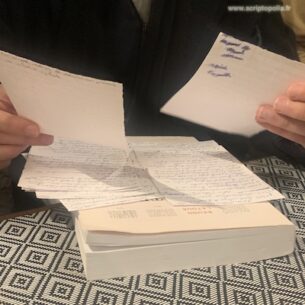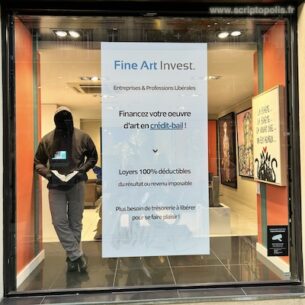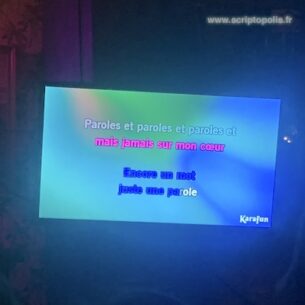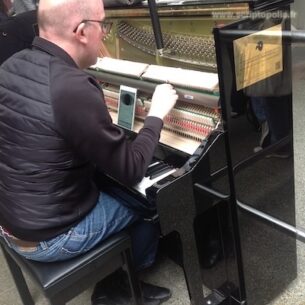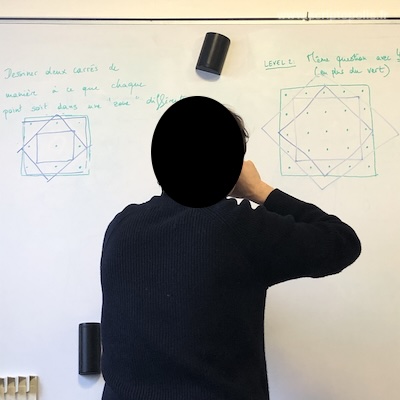Membrane
As vehicles for collaboration, information or relaxation, the boards in the social rooms of computers science labs can also become the medium of a game, precipitating interactions in which researchers escape from the common conversation and abandon their cup of coffee to focus their attention on an enigma. During the coffee break, without warning, A goes to the board. White board marker in hand, he calls out to B, “you should like this”, and draws a shape and a set of points inside before adding an instruction (“Draw two squares so that each point is in a different “zone””). B watches him, gets up, takes another marker and begins to sketch. Here is the initial interaction transformed. B erases his first drawing while commenting on his reasoning. While he tries to answer the riddle, A trace another shape, he says amused: “the version above” by writing “level 2” in front of the new instruction. B continues to think about the first riddle by reproducing the shape below. Meanwhile, the other colleagues observe, react to the attempts at resolution, try to disturb B with jokes; but the boundary of the interaction around these riddles seems thick. In “Fun in Games”, Erving Goffman (him again) introduces the heuristic notion of membrane to describe the specific space-time of focused interaction. Here, to enter into the exchange, one would have to get up, perhaps take a third marker and above all share their fun in interacting with the geometric reality of squares and points that they make emerge on the board.



